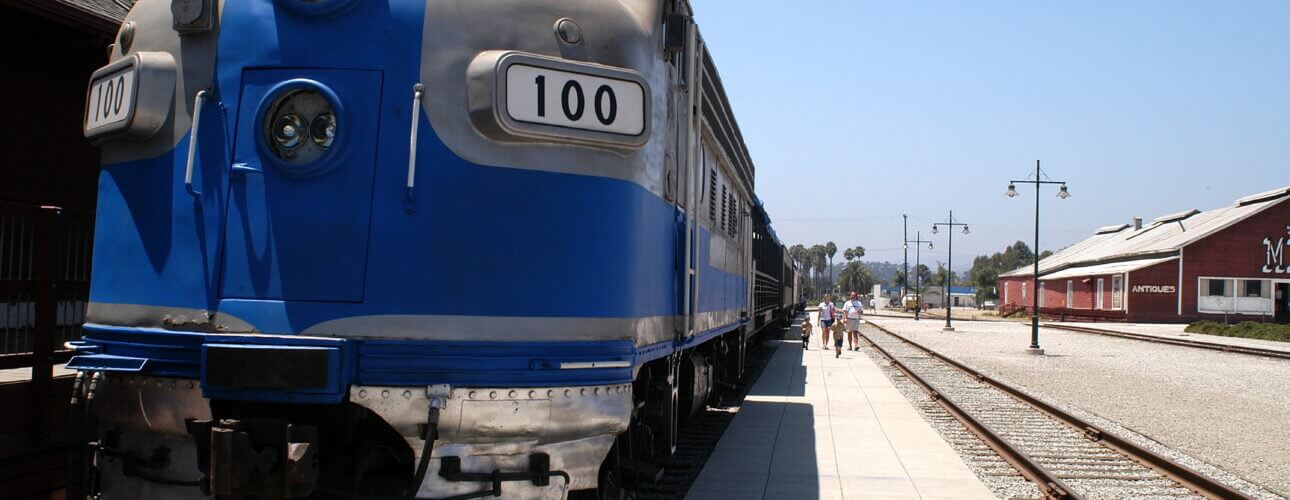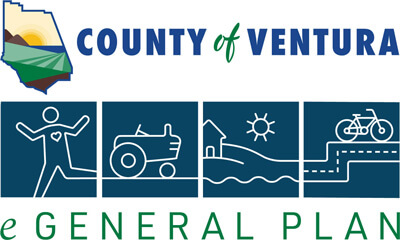
Circulation, Transportation, and Mobility
The Circulation, Transportation and Mobility Element identifies goals, policies, and programs that establish a framework for decisions in Ventura County concerning the countywide transportation system. The transportation system provides for the safe and efficient movement of people and goods in and around the county through a variety of transportation modes. While the Element strives to encourage a multi-modal transportation system that serves the mobility needs of all residents, it also reflects the rural nature of the county.
Policies in the Element encourage development of a “Complete Streets” strategy for public transportation services, and pedestrian and bicycle facility improvements in areas of the county where they will provide residents a range of options for travel to work, shopping, and leisure destinations. Besides improving access and mobility options, “Complete Street” policies provide public health benefits, since many of them can have an influence on physical and mental health. Transportation infrastructure that promotes everyday physical activity such as walking and biking, sometimes referred to as “active transportation,” addresses sedentary behavior, which is a shared risk factor for obesity and other chronic diseases. As specified in the California Complete Streets Act of 2008, complete streets are those roadways that are planned, designed, constructed and maintained to provide safe mobility for all users regardless of age and physical ability, including pedestrians, bicyclists, motorists, and public transportation riders appropriate to the function and context of the facility. There are many policies supporting active transportation in Section 4.2 of this Element.
The Circulation, Transportation, and Mobility Element includes a series of circulation diagrams (i.e., maps) that depict plans for the County’s transportation system.
These diagrams were developed to guide long-range transportation system planning and programming in Ventura County. Roadways are classified in this system based on the linkages they provide and their function in the hierarchy of roadways. The Circulation, Transportation, and Mobility Element works closely with the Land Use section of the Land Use and Community Character Element to ensure that the county transportation system can accommodate growth anticipated during the General Plan planning period.
Goods movement efficiency improvements also offer potential solutions for improving safety, alleviating roadway congestion, and providing opportunities for long-term transportation connections both to other regional centers in the state and between communities within Ventura County. Policies in this section encourage an efficient and economical transportation system to move goods for the Port of Hueneme and Naval Base Ventura County, agricultural, mineral resource, and manufacturing industries.
The Circulation, Transportation and Mobility Element also provides a policy framework to address emerging trends in the transportation sector including the market penetration of Mobility-as-a-Service (MaaS) providers such as Uber and Lyft, provision of “shared mobility” enterprises such as bike-share and scooter-share, and advances in transportation technology including electrification of vehicles and autonomous vehicles. These emerging trends will continue to influence travel choices within Ventura County, which in turn can alter infrastructure needs. New policies will help prepare Ventura County for these emerging trends.
Determination of environmental impacts as it relates to the transportation system has also changed. The traditional performance measure has been Level of Service (LOS). LOS is a measure used to rate roadway traffic flow characteristics and serves as an indicator of roadway performance, relative to locally established standards for service quality. With the passage of SB 743, vehicle miles traveled (VMT) will replace LOS as the basis for determining transportation impact identification and mitigation under the California Environmental Quality Act (CEQA). VMT is a measure of the amount of travel for all vehicles in a geographic region over a given time period. This Element provides a policy framework for determining the impact of VMT changes resulting from discretionary development within the unincorporated area. The County LOS standards and policies will remain for use outside of CEQA as part of the County’s transportation planning and consideration of land use legislation and entitlement applications. County LOS thresholds are shown in Figure 4-1.
